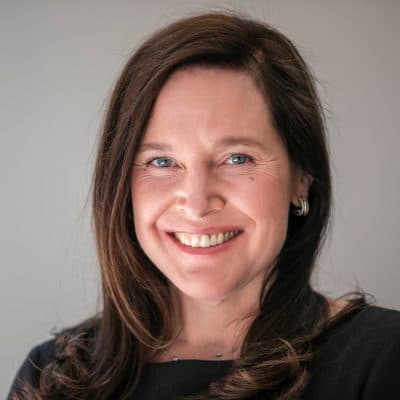The nonprofit real-estate company the Urban Land Conservancy is making big moves on the East Colfax corridor. The organization's most recent purchase along that part of the Denver-Aurora border: Citywide Banks' building and 1.77-acre site at 10660 East Colfax Ave. in Aurora.
The Urban Land Conservancy plans to lease the distinct modern building as office space for nonprofits and other mission-driven organizations. Rent will be below market rate. Eventually, the Urban Land Conservancy will bring in a developer to build affordable housing on the property's south lot.
"On this property we will work to anchor long-term community benefit in the East Colfax Corridor, helping to further local community goals, including minimizing displacement of existing residents and businesses," said Sarah Harman, vice president of real estate for the Urban Land Conservancy, in a statement. "Preservation of the iconic, three-story office building will provide a dynamic new Main Street opportunity for nonprofits and community-serving organizations."
The Urban Land Conservancy has designed the Aurora project with community input from Impact East Colfax, a group it leads with the neighborhood organization the Fax Partnership. The voices of locals have been key throughout the visioning process, Harman said.

The Citywide Banks branch is near Aurora's downtown, not far from the Aurora Fox Theatre and the People's Building. The area has seen its share of booms and busts.
Aurora's downtown was built as a suburb of Denver along the former Colfax streetcar line. When the strip turned into a four-lane highway, which Playboy once dubbed "the longest, wickedest street in America," that section of Aurora thrived with motels, restaurants and commerce.
Then came the interstates, which killed most highway travel, and Colfax Avenue hit hard times.
These days, the East Colfax Corridor at the Denver-Aurora border is a long struggling, impressively multicultural community that's becoming a hotbed of fresh economic activity.
But the new growth, some activists and residents fear, is pricing out people currently living there.

Developers in Denver, including the Urban Land Conservancy, see enormous opportunity along East Colfax.
While residents experience gentrification, some profit-driven developers and real estate investors are eager to cash in on the area's cheaper-than-Denver property rates, proximity to transit and burgeoning cultural life. But the Urban Land Conservancy hopes its own efforts create homes and an economy that nurtures communities that might otherwise be pushed out.
"It would be naive for me to say, 'Oh, yeah, within this work we're solving the greater metro issues around gentrification and displacement,'" admitted Urban Land Conservancy CEO Aaron Miripol. Still, he added, "I know we're making a small dent."
And that dent is long lasting.
The nonprofit's deals with developers work like this: The group buys the ground and leases it to companies that build their own buildings on the site. Part of the ground lease mandates that whatever's built is devoted to affordable housing and/or mission-driven nonprofits and organizations. That lease lasts 99 years, a term which can be renewed.
Having fast access to capital has been critical in purchasing properties for affordable housing and nonprofits, Miripol said. So how does that work?
The nonprofit funded its efforts on the Citywide Banks project with help from the Nesbitt Commercial Group and a low-interest loan from the 1STBANK's Metro Denver Impact Facility. The facility, which is essentially a low-interest loan through 1STBANK, is in turn funded, in part, by the Colorado Health Foundation, the Colorado Trust, Colorado Housing and Finance Authority, Gates Family Foundation, the Piton Foundation, and the Denver Foundation.
The Metro Denver Impact Facility, Miripol explained, is a model for how banks, foundations and nonprofits can work together to develop cities in an affordable and community-driven way through low-interest capital.
Urban Land Conservancy has built most of its 45-plus projects in Denver; now the city is becoming too expensive for the nonprofit.
The new Aurora purchase is part of the 18-year-old organization's move to launch projects outside Denver. The Urban Land Conservancy can buy cheaper land and buildings in the suburbs, and the group now has projects in Commerce City, Lakewood, Westminster and Aurora.
Working in the suburbs will likely continue to be a focus for the nonprofit.
In Denver itself, the Urban Land Conservancy has major sites in Five Points and Northeast Park Hill, but those neighborhoods are simply too expensive for future projects, Miripol said.
Even Elyria-Swansea -- where the nonprofit is building out a $250-million transit-oriented-development with Columbia Ventures that will include permanently affordable housing, community-based commercial space and a health clinic -- has become too pricey for new developments for the Urban Land Conservancy.
"To be fair, we could not enter that community today," lamented Miripol. "It's just far too expensive."
Yet the Urban Land Conservancy hasn't left Denver altogether.
Over the summer, the nonprofit announced the June purchase of the Johnson and Wales campus, with Denver Public Schools and the Denver Housing Authority. That massive project, near East Colfax, will include affordable housing, business incubators and space for nonprofits.
For the Urban Land Conservancy, old spaces can be repurposed and preserved for the community instead of torn down and exploited for developers.
"We don't always have to think about what's the highest investment market rate return," Miripol said.













